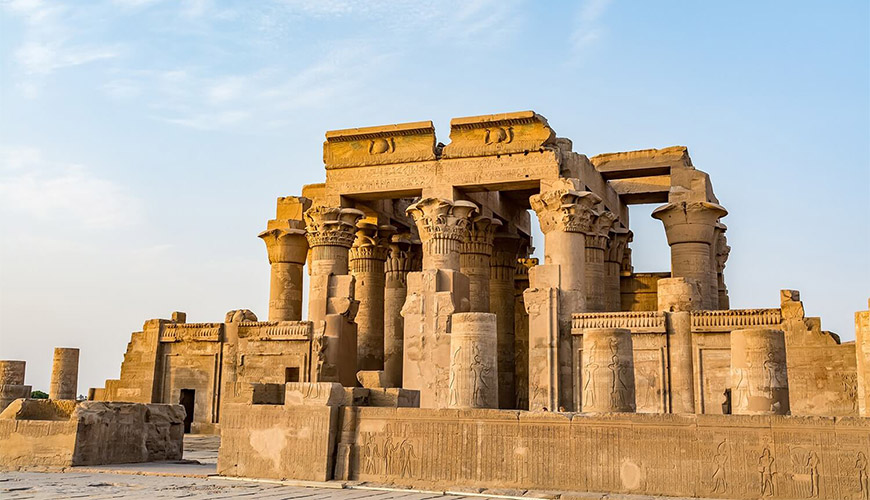Kom Ombo Temple, a remarkable ancient structure located on the banks of the Nile River in Egypt, stands as a testament to the grandeur and complexity of the civilization that once thrived in the region. This magnificent temple holds a unique position in the annals of ancient Egyptian history, as it is dedicated to two sets of deities, embodying the concept of dualism. With its intriguing architecture, intricate reliefs, and rich symbolism, Kom Ombo Temple offers visitors a captivating glimpse into the religious beliefs and cultural practices of the past.
Kom Ombo Temple, also known as the Temple of Sobek and Haroeris, was built during the Ptolemaic dynasty, between 180 and 47 BCE. However, the site itself has a much older history, with evidence of earlier structures dating back to the New Kingdom period (16th century BCE). The temple’s location holds significance as it marks the boundary between Upper Egypt and Lower Egypt.
One of the most intriguing aspects of Kom Ombo Temple is its dedication to two distinct sets of deities. The southern half of the temple is devoted to the crocodile-headed god Sobek, associated with fertility, protection, and the Nile’s annual flooding. Sobek was considered a powerful deity, and his worship was particularly popular in areas where crocodiles were abundant. The northern half of the temple is dedicated to Haroeris, also known as Horus the Elder, a falcon-headed god associated with the sun, kingship, and healing.
The architecture of Kom Ombo Temple follows a symmetrical design, with two entrance gateways, two hypostyle halls, and two sanctuaries. The temple’s layout perfectly reflects the duality of its worship, as each side mirrors the other. The courtyards feature colonnades adorned with intricate hieroglyphics, while the walls depict various scenes of religious rituals, medical practices, and mythological tales.
Kom Ombo Temple showcases numerous remarkable reliefs and features that offer insights into the beliefs and practices of the ancient Egyptians. The reliefs depict surgical instruments, medical treatments, and the process of mummification, suggesting that the temple served as a center for healing and medical training. These scenes provide valuable information about the advancements in ancient Egyptian medicine and the techniques employed by the priests.
Another notable feature is the Nilometer, a measuring device used to monitor the Nile’s water levels. The annual flooding of the Nile was vital for agricultural prosperity, and the priests relied on the Nilometer to predict the extent of the flood. The accuracy of their predictions played a crucial role in managing irrigation and ensuring a bountiful harvest.
For modern visitors, Kom Ombo Temple offers a captivating journey into the mysteries of ancient Egypt. Exploring the temple’s grand halls, observing the detailed reliefs, and experiencing the serene ambiance of this sacred site is an unforgettable experience. Local guides provide valuable insights into the temple’s history, mythology, and the intricate symbolism hidden within the reliefs.
Kom Ombo Temple, with its dual dedication and rich cultural significance, stands as a remarkable testament to the religious beliefs and practices of ancient Egypt. It is a testament to the ingenuity and sophistication of the civilization that once thrived along the Nile River. Today, this architectural marvel serves as a bridge between the past and the present, offering visitors an opportunity to connect with a civilization that shaped the course of human history. Exploring Kom Ombo Temple is an immersive journey into the world of ancient Egyptian dualism, where the interplay of gods and mortals shaped the fabric of daily life.






